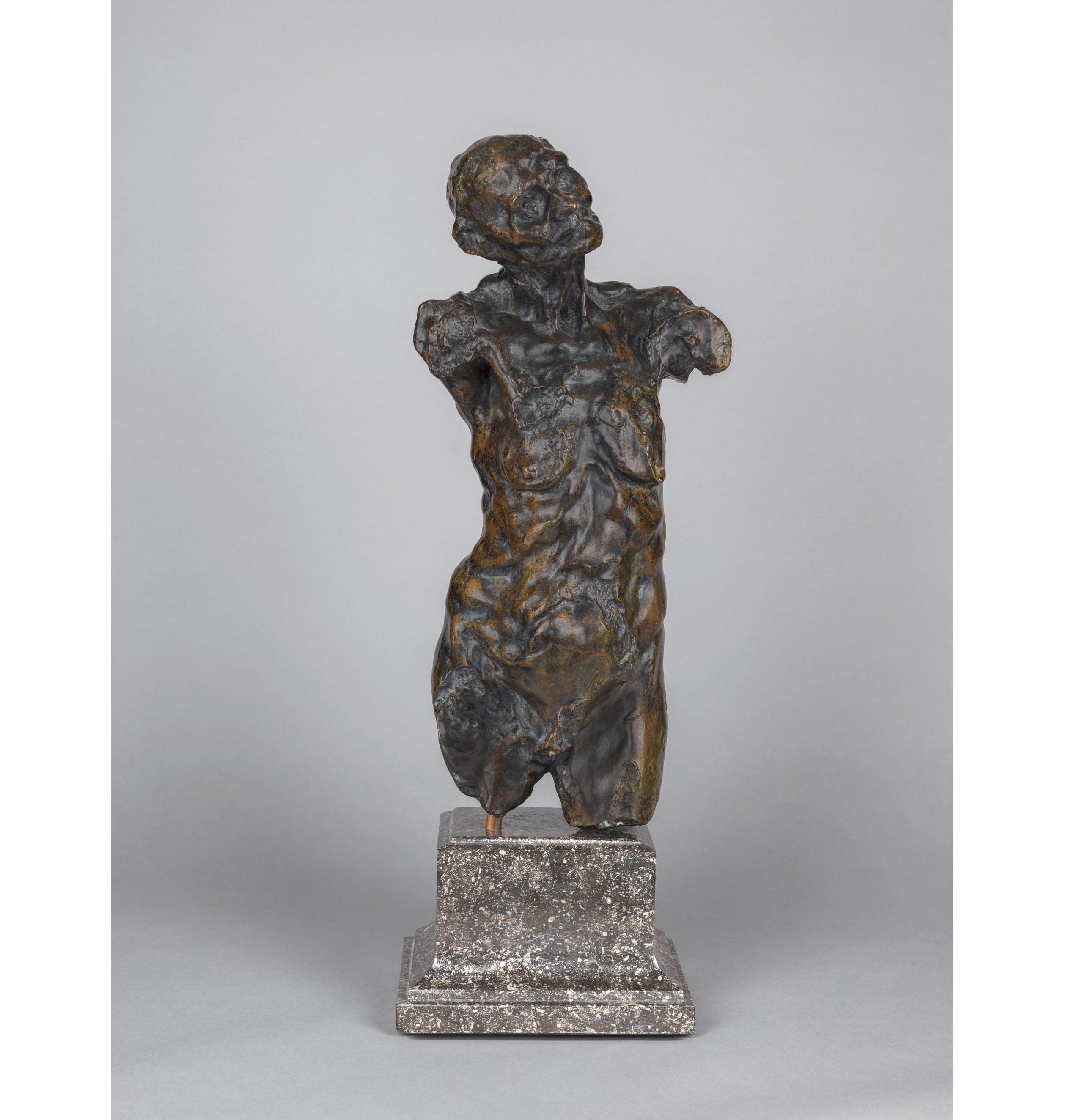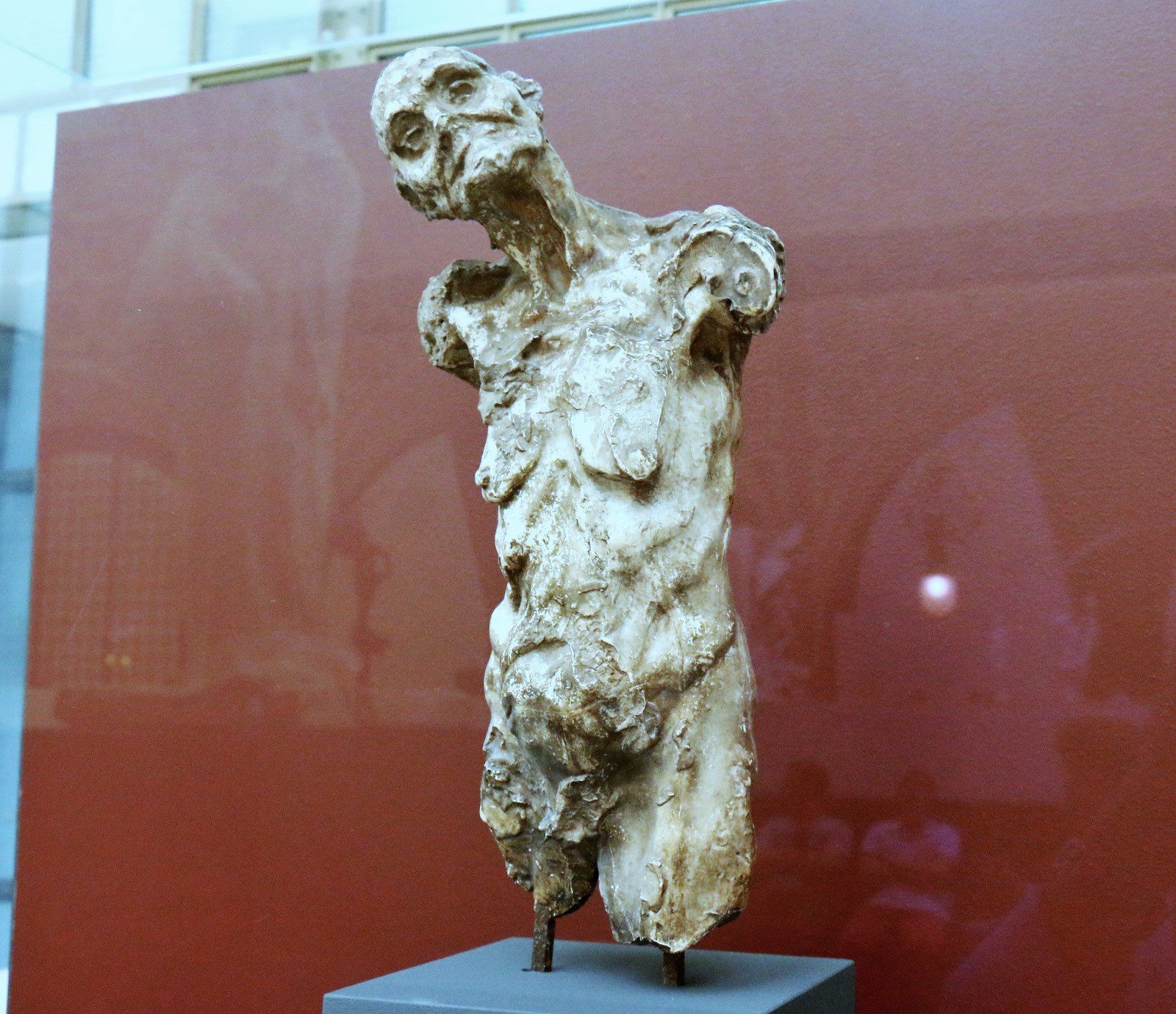
Clotho Musée Rodin Rodin, Camille claudel, Beautiful wife
Clotho ( / ˈkloʊθoʊ /; Greek: Κλωθώ) or Klotho, is a mythological figure. She is the youngest goddess of the Three Fates or Moirai. In ancient Greek mythology, she spins the thread of human life, her sisters draw out ( Lachesis) and cut ( Atropos) the thread. Her Roman equivalent is Nona.

Camille Claudel Torse de Clotho Images d’Art
The Musée d'Orsay owed it to its public to acquire two major works by Camille Claudel. In 1982, L'Âge mûr (the first bronze melted during the artist's life) entered its collections, and in 1988, the Clotho torso, in plaster, came in its turn to evoke "that destiny spinning its own skein, that gothic old woman similar to a spider caught in.

**TORSE DE CLOTHO CHAUVE Camille claudel, Oeuvre artistique, Les oeuvres
Clotho Clotho Camille Claudel Bookmark type sculpture year 1893 dimensions 35.4 in 90.0 cm medium Plaster Description Clotho is the youngest of the Three Fates or Moirai, in ancient Greek mythology. She was responsible for spinning the thread of human life.

Camille Claudel Clotho Plaster 1893 Musée Rodin. Camille claudel, Producción artística
Camille Claudel (1864-1943). Clotho was the youngest of the Three Fates who decided human destiny. Shown here as a very elderly woman, the sculpture forms part of Rodin and Claudel's artistic dialogue about the depiction of old age. Rodin had tackled this theme in 1884-85, in She Who Was the Helmet Maker's Once-Beautiful Wife ; his.

Torso of Chotho, bald / Torse de Clotho chauve (vers 1893) par Camille CLAUDEL (18641943
Sculpture Claudel, The Age of Maturity Camille Claudel, The Age of Maturity or Destiny, c. 1902, bronze group in three parts, 114 x 163 x .72 cm (Musée d'Orsay) Her Masterpiece Towards the end of the nineteenth century, we find an increasing number of women taking their place among the most progressive artists of their age.

Torse de Clotho chauve Musée Camille Claudel
Camille Claudel, Little Châtelaine, 1892-96 — one of Claudel's best and most iconic marble sculptures Camille Claudel: Genius and Force of Nature Claudel was born in 1864 in Fere-en-Tardenois, in the champagne region of France. She began sculpting at age 12, showing prodigious talent. She would often dig up red clay around her house for material.

Clotho (1893) par Camille CLAUDEL (18641943). Fille de Nyx (la Nuit) et Erèbe (les Ténèbres
Clotho Camille Claudel, Clotho, 1893, plaster, 90 x 49.3 x 43 cm (Musée Rodin, Paris) (photo: Clapagaré, CC BY-NC-SA 2.0) Precedence for the other female figure can be found in works such as Clotho.

Camille Claudel (18641943) Lavi
French Sculptor Born: November 8, 1864 - Fère-en-Tardenois, France Died: October 19, 1943 - Montdevergues, France Movements and Styles: Symbolism , Proto-Feminist Artists , Modern Sculpture Camille Claudel Summary Accomplishments Important Art Biography Influences and Connections Useful Resources Similar Art and Related Pages

Épinglé sur Camille CLAUDEL (18641943) Sculpture
Camille Rosalie ClaudelFrench pronunciation: [kamij klodɛl]; 8 December 1864 - 19 October 1943) was a French sculptor known for her figurative works in bronze and marble. She died in relative obscurity, but later gained recognition for the originality and quality of her work.

Torse de Clotho (vers 1891) par Camille CLAUDEL (18641943). Plâtre. Musée d'Orsay, Paris. Photo
With Clotho, Camille Claudel also accepted the challenge of depicting this wizened flesh, this cadaverous thinness, where what is ugly in reality becomes beautiful in the eyes of the artist, because of its expressiveness and strength of character. The ARTwork in the museum

Épinglé sur Camille CLAUDEL (18641943) Sculpture
The French artist, Camille Claudel, was born the 8th December 1864 in Fére-en-Tardenois. At an early age, Camille was interested in sculpture. Before she turned 18 years old, her family moved to Paris, where she visited courses in the Academie Colarossi and established her own atelier together with two other young female sculptors.

Clotho de Camille Claudel, 1893, plâtre, 90 x 49,5 x 43,5 cm, Musée Rodin à Paris.
Clotho était la plus jeune des trois Parques qui présidaient à la destinée humaine. Présentée sous les traits d'une très vieille femme, la sculpture s'inscrit dans un dialogue artistique entre Rodin et Camille Claudel autour de la représentation de la vieillesse. Sur cette thématique, Rodin avait créé, en 1884-1885,.

Camille Claudel, torse de Clotho Le blog de acbx41
Clotho est une sculpture de Camille Claudel dont on connaît deux versions : une réalisée en 1893 en plâtre et une autre, aujourd'hui perdue, de 1897 en marbre. Description. Dans la mythologie grecque, Clotho est l'une des filles de Zeus, la plus jeune des trois Parques qui présidaient à la destinée humaine. Elle est donc interprétée.

Camille Claudel, Torse de Clotho Camille claudel, Esculturas de arte, Esculturas humanas
Aujourd'hui nous regardons une œuvre de Camille Claudel intitulée « Clotho * » une sculpture d'abord réalisée en plâtre pour le Salon de la société nationale des beaux-arts de 1893* avant sa version en marbre qui sera exposée en 1897 ; ce plâtre est aujourd'hui conservé au Musée Rodin, à Paris.

Camille Claudel Clotho Plaster 1893
Torso of Clotho. c. 1893. Plaster, height 45 cm. Musée d'Orsay, Paris. Clotho is the youngest of the Three Fates or Moirai, in ancient Greek mythology. She was responsible for spinning the thread of human life. This highly impressive plaster is one of Claudel's most unusual figures: a haggard old woman, well marked by physical decay, her body.

d'Orsay Torse de Clotho par Camille Camille Claudel, Sculptures, Greek, Statue, Art, Art
The Mature Age ( French: L'Âge mûr ), also named Destiny, The Path of Life or Fatality (1894-1900) is a sculpture by French artist Camille Claudel. The work was commissioned by the French government in 1895, but the commission was cancelled in 1899 before a bronze was cast.